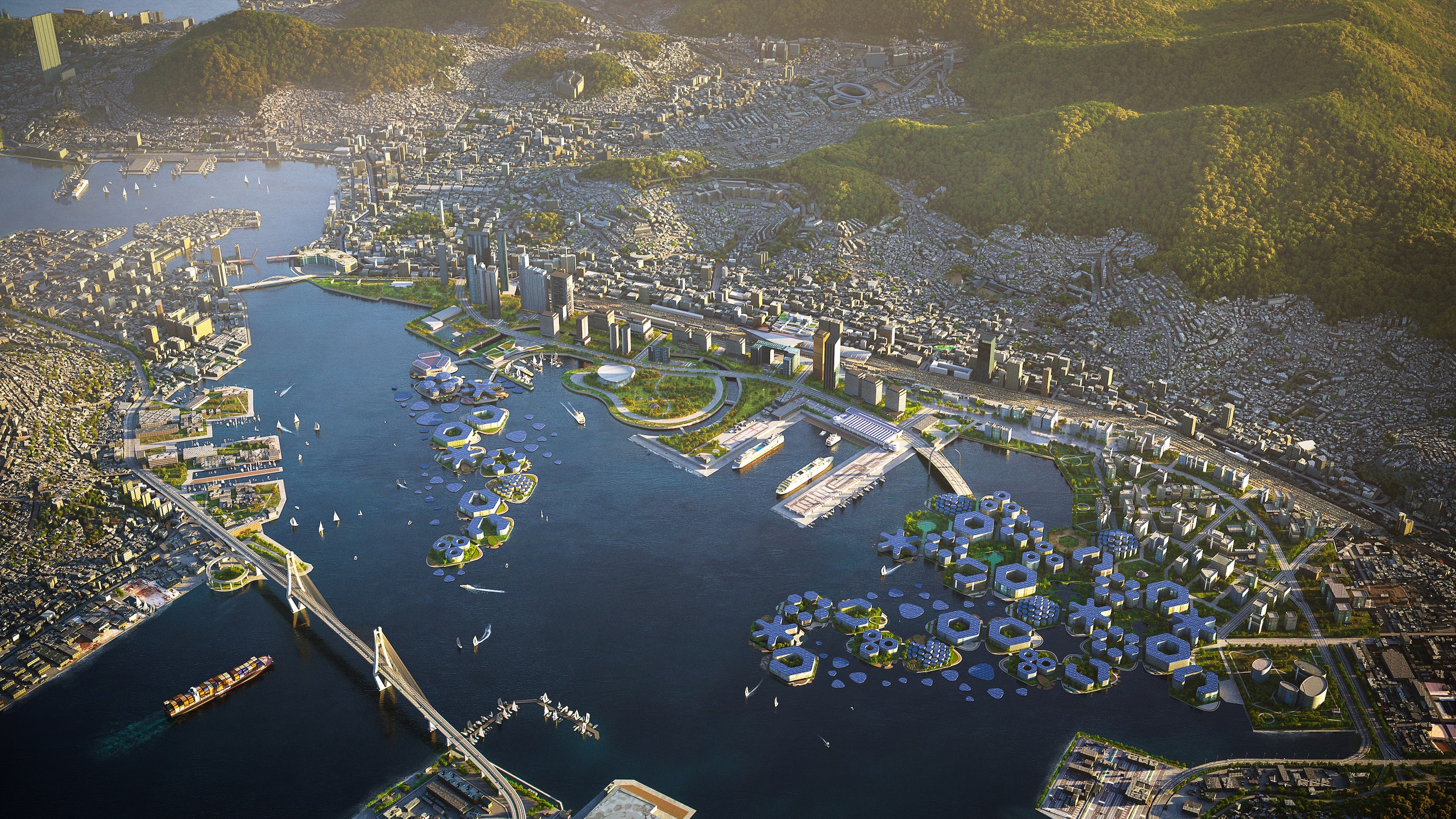From California to Copenhagen, cities are taking steps to stay above water. But as the C40 Cities Climate Leadership Group projects that rising sea levels of at least half a meter (roughly 1.6 feet) will affect 800 million city dwellers by 2050, addressing climate change will clearly require some unexpected and unconventional ideas.
Enter Oceanix Busan, a recently unveiled design for what would function as a sustainable floating neighborhood just off the coast of the major South Korean port city. The modular project will utilize a wide array of sustainable materials and methods in an effort to foster a self-sustaining human habitat capable of coping with any rise in sea level. Here’s a closer look at some of what makes this offshore project so groundbreaking.
Three platforms, three purposes
Oceanix Busan’s initial design calls for three interconnected platforms, connected to land via bridges, each with a distinct function. There’s a Lodging Platform, which offers guest rooms with sweeping harbor views, shopping, dining, and other communal spaces. A Research Platform features a temperature-controlled garden space, including hydroponic towers that will grow the floating city’s food. Finally the Living Platform is where full-time inhabitants reside and gather.
There’s room to expand
The initial Oceanix blueprint calls for 15.5 acres of platform space with room for 12,000 people. But just as it’s designed to rise with sea levels, its rather modular footprint can grow to accommodate 100,000 people across a total of 20 platforms.
It’s built using material that grows
A key material in the Oceanix Busan platforms—which will be anchored to the seabed—is Biorock. Often used to help repair damage to coral reefs and reinvigorate aquatic ecosystems, Biorock essentially absorbs minerals from seawater to naturally form a limestone coating that’s not only multiple times stronger than typical concrete, but is also self-sustaining and self-repairing over time. Add in the fact that Biorock actually absorbs a bit of carbon dioxide, and it’s easy to see why this sustainable material plays an essential role in the project.
